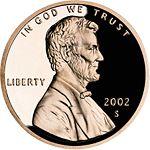Easy Ways To Track Travel Expenses and Stick To Your Vacation Budget

Most families need to stick to a budget when they travel, but tracking your daily expenses, especially in a foreign currency, can be tricky. Here are some easy tips to help you keep track of how much you are spending.
Before You Leave:
- Create an email folder for your trip. Each time you make a booking, place the itinerary confirmation and receipt into the folder. You can use the folder to help you build your final itinerary before you leave too.
- Set an overall daily budget for your trip that includes lodging, food, transportation, and entertainment. During the trip you can track your spending against this goal
- Find out how much it costs you to get your money (and know which source is the cheapest). For example, what fees does your bank charge for using an international ATM and withdrawing foreign currency? What about your credit card? What is the exchange rate? If you expect to travel a lot, you might consider opening Capitol One Credit Card with no international transaction fees.
On Your Trip
- Develop a rule of thumb for converting between currencies. You'll do a better job of reigning in your purchases if you know how much you are spending. Your rule of thumb doesn't need to be exact. For example, at today's rate of 1.563 US Dollars to the Euro, I would multiply any price I saw by two and then subtract 20%. (Meaning a 30 euro item is approximately $60-$6=$54) This accounts for any transaction fees and slightly overestimates the cost of each item so that there aren't any nasty surprises when I return home.
- As you get receipts write on each receipt what it was for.
- Bring an envelope for receipts. if some expenses are deductible, reimbursable or shared, bring separate envelopes for each type of expense. At the end of each day, empty your receipts from your wallet into your envelope.
- Keep the cash for the day separate from the rest of your cash. For example, you get $300 out of the ATM and you want that to last you 4 days, so, that's $75/day... Put $75 in an easy to access part of your wallet and you put the rest in a harder to reach spot. If you see yourself going into the hard-to-reach spot, you know you're going over budget.
- If you need a more detailed accounting that includes smaller cash transactions, or want more accountability, carry a small notebook with you each day. Record each transaction in the notebook (including snacks, bus rides, etc). At the end of the day, total up your expenses and note where you wasted money and can do better the next way. This tip helped us cut our budget significantly by doing things like buying bottled water and snacks in a local grocery store and carrying them with us when we travel.
Not only will having a detailed accounting of how much you spent on your trip help you keep expenses down as you travel, it will help you do a better job of estimating expenses for your next trip before you leave home.
Related Links:Saving Money on Your Family Vacation
Step By Step: Creating A Budget for Your Family Vacation
Reader Questions: Budgeting For A Family Trip
1 comment |
Posted on April 29, 2008 |
 Save to del.icio.us
Save to del.icio.us


Comments
pps on September 24, 2009 at 6:25 a.m.
Good tips! I also suggest to use a personal finance software with a cellphone or PDA phone. This makes recording and tracking expenses much easier. An Excel sheet on a PDA would do very well as a personal finance planner and it can be easily transferred to a PC for expenses tracking and archiving.